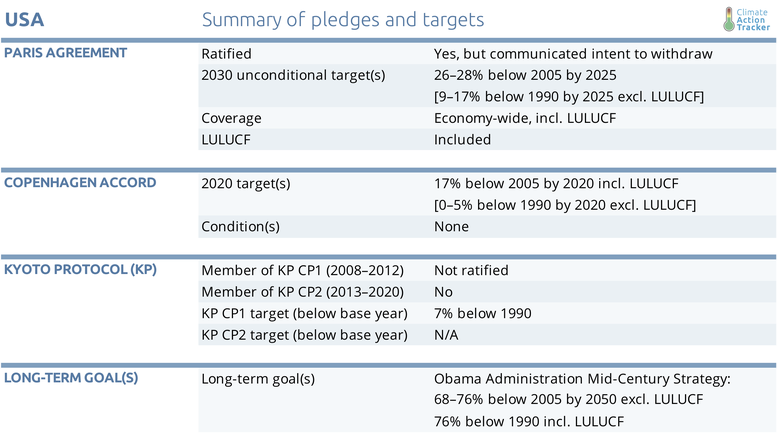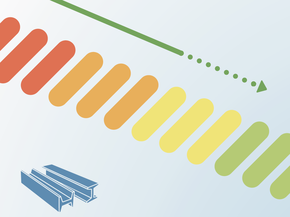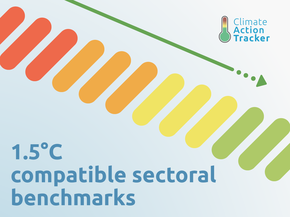Pledges And Targets
Summary table

Paris Agreement targets
The US NDC set a target of reducing its emissions by 26% to 28% below 2005 levels by 2025, including LULUCF. Although the Trump Administration has indicated that it intends to withdraw from the Paris Agreement and stop implementation of the NDC, it legally remains in place until 4 November 2019. The target is consistent with a linear interpolation between the 2020 pledge and the Obama Administration’s national long-term 2050 target.
The NDC applies to all sectors including forestry (LULUCF). The impact of the NDC on reducing GHG emissions of the sectors other than LULUCF is unclear, due to uncertainties in the estimate of land sector removals and in the projections for these removals in 2020 and 2025. Changes in methodology increase the projected sinks in the land sector as reported in the 2nd Biennial Report compared to the 6th National Communication, making it 4–5 %-points easier for the US to meet its future targets.[1]
Based on the values in the US’s 6th National Communication (United States of America, 2014), we estimate that the 26–28% reduction target in net emissions are likely to result in a range of 21–28% reduction in GHG emissions excluding LULUCF below 2005 levels, depending on whether the sink from LULUCF is at the high or low end of the projections.
1 | For methodological consistency with historical data, CAT uses values from the 6th National Communication
2020 pledges
The United States is not a Party to the Kyoto Protocol. While a target of a 7% reduction below 1990 from 2008–2012 was originally negotiated and agreed, the US never ratified the Protocol and the target therefore never came into force.
Under the Copenhagen Accord, the US announced an emissions reduction target of 17% below 2005 levels, around 0 to 5% below 1990 levels excl. LULUCF, by 2020 (United States Department of State, 2010).
Long-term goal
As part of the Paris Agreement, all parties should develop and communicate long term strategies for development with low greenhouse gas emissions. On 16 November 2016, the Obama Administration submitted a “Mid-Century Strategy for Deep Decarbonization” (The White House, 2016) in accordance with Article 4. The strategy sets an emissions reduction target of 80% or more below 2005 levels in 2050, incl. LULUCF. This is equivalent to 68–76% below 2005 levels (63–73% below 1990), excl. LULUCF, depending on the magnitude of the LULUCF sinks. The Trump Administration has removed the mid-century strategy from all government websites, and it is unclear if the target still stands.
Further analysis
Latest publications
Stay informed
Subscribe to our newsletter





